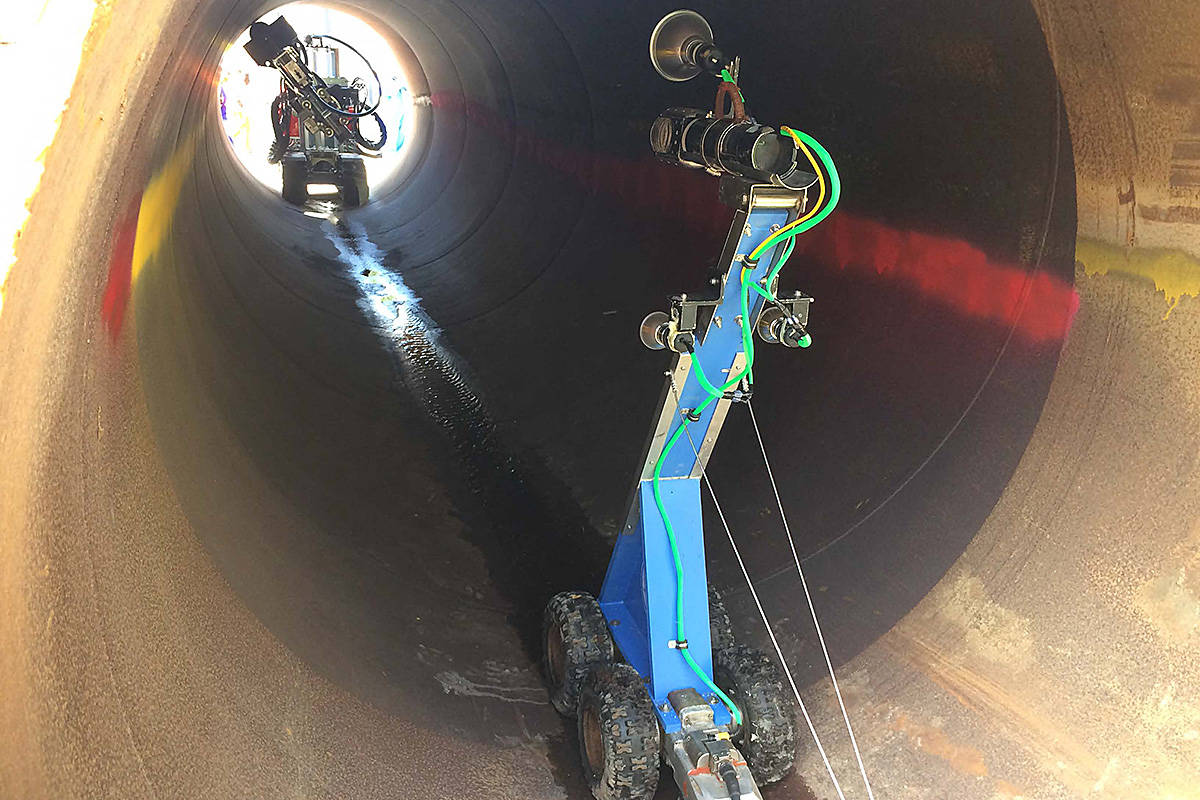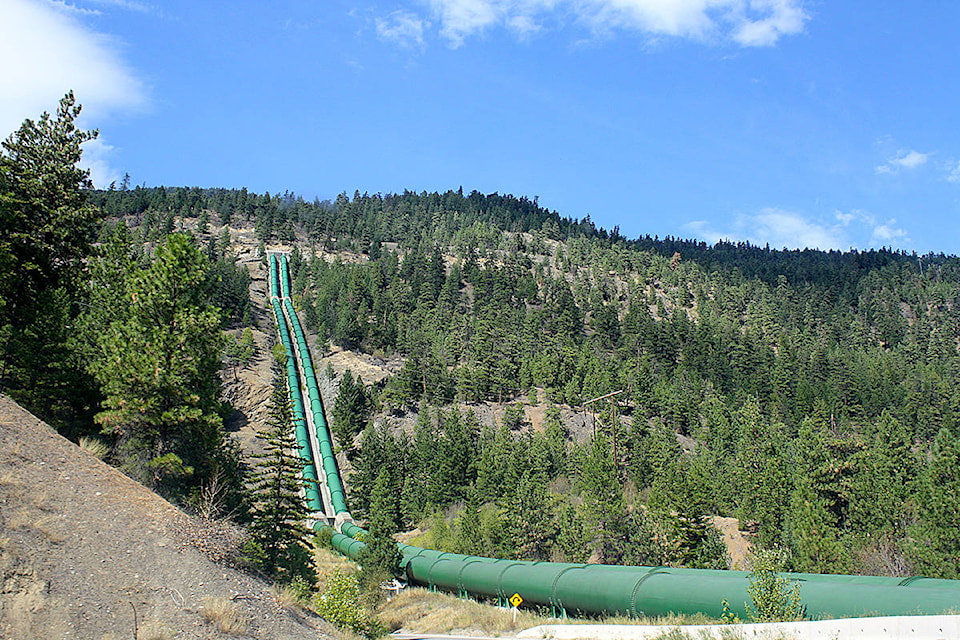Walco Industries started out in the 1980s as a family company cleaning septic tanks and running a street sweeper.
Last fall, it completed its largest project ever undertaken to date – cleaning, sandblasting and re-coating 1,342 metres of metal penstock in Bridge River, B.C.
Over the years, Edward Walcot and his son Charlie invested in vacuum trucks and eventually into high pressure water pumps and equipment to complement their industrial cleaning.
Gaining a foothold in the pulp and paper industry, Walco grew to being one of the most well-equipped industrial cleaning companies on the West Coast of Canada, the company says in a press release, with three divisions now, two on Vancouver Island (Campbell River and Port Alberni) and one in the greater Vancouver area.
Walco was set to meet new cleaning challenges. By 2016 the pulp and paper industry had begun to feel the effects of the new digital revolution. Mills were closing due to decrease in the need for paper products and the mills that remained were cutting back on maintenance or asking for reduced costs while the cost of running the fuel-dependant equipment was rising.
Walco Industries had also adapted and by 2016, Charlie Walcot had developed a strong management team that directed Walco to becoming progressive and safety-structured in accordance with industry demands. Walco is a COR certified company, an accomplishment recognising a well-structured safety program with WorkSafeBC.
High pressure water cleaning has made great safety gains since 2003. Walco uses WJTA recommendations and adopted WJTA European standards for certifying, training and protecting its employees using HP water, including a well-equipped research development test/training centre complete with a confined-space tank and a variety of piping including a very large, 3 m (10’) diameter, 41.5 m (136’) long pipe at its Port Alberni location.
The Walco team began responding to RFP tenders to help diversify its workload and this led to the largest project Walco would undertake to date.
By late 2017, Charlie Walcot travelled to Europe to oversee the testing of Walco’s new custom robot and the Port Alberni testing centre was alive with the developing and testing of other high-pressure cleaning tools that Walco fabricators designed with senior management.
Walco was preparing for the coating removal and cleaning of 1,342 m (4400ft) of BC Hydro penstock piping at its Bridge River, B.C. location. Situated near Seton Portage, B.C., Penstock 1 BR2 was one of two penstocks feeding the Bridge River 2 generation station and located nearby was the Bridge River 1 station.
The Bridge River hydroelectric complex consists of three dams and stores water for four generating stations. The system uses Bridge River water three times in succession to generate 492 megawatts, or 6 to 8 per cent of British Columbia’s electrical supply. These penstocks were put into place in the mid- to late-1950s and time took their toll on the protective surface coatings inside.
The customer has a no-compromise safety policy and their stipulation of keeping worker time inside the confined space of the penstock at its lowest possible level during cleaning, was clear, a Walco spokesperson noted. This raised some difficult issues when cleaning 3 m (10’) diameter pipeline on a 43-degree angle at times for over 1.3 kms (4400’). A plan was developed to give each of the eight-member team individual expertise and training with the technology as well as training for high angle rescue.
The robotics track-driven system was complemented by Walco’s own technology of large, computer-controlled, winch-driven centralizers.
Up to 40,000 (22gpm) psi was used to remove three layers of coating – a petrified silt coating that covered a chromium coating and, finally, a tightly-adhering lead-based coating to an SSPC/WJ-3 level – in preparation for sandblasting and profiling before the fresh re-coat.
The removed coatings were collected at various points in the pipe for filtering back to clean water. The robotics and technology, besides relieving fatigue in workers over such a large surface area, also minimized worker exposure to the chromium and lead contaminants present in the operation. A remote CCTV camera was driven behind the remote-controlled robotics and centralizer technology as a method of guiding the equipment as well as documenting the progress from the robot operator’s control cube van. The wireless CCTV signal was further developed to provide real time footage for the operations supervisor’s trailer as well as the winch operator. Radio communication between all the parties allowed precise cleaning controls.
The four-month project was completed by the fall of 2018 and Walco employees succeeded in reaching zero safety incidents, environmental concerns or first aid calls.
Walco management will perfect the technology with what has been learned at this penstock project and the development of hydro-demolition equipment has begun to broaden the company’s future using the most modern waterjet technology available along with world class safety standards.

